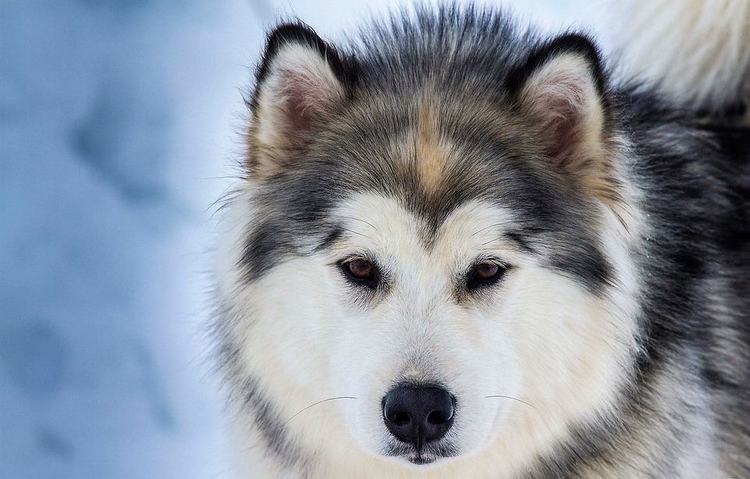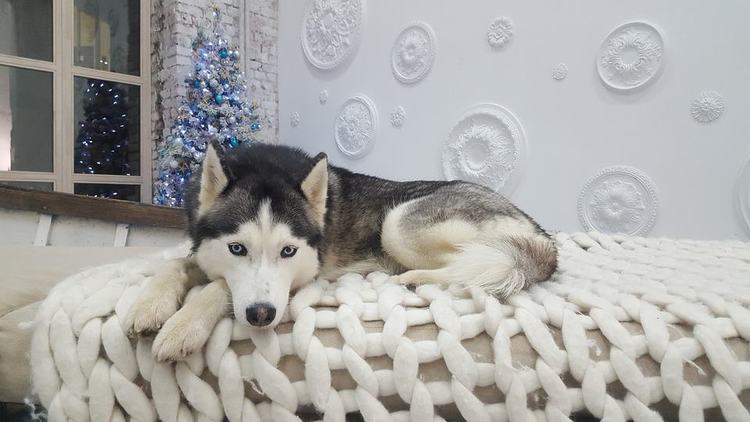When you bring home your adorable Siberian husky – the extra fluff on your puppy is a major aesthetic selling point.
…Until you realize that husky shedding is real, and that gorgeous fluff is all over your carpet.
You heard the rumors before. Do huskies shed a lot? – and is it really that bad?
The short answer: yes.
But the good news is that a husky typically won’t shed all year round, and the most heavy shedding will coincide with seasonal changes.
We’ve got a few tips for what you can do to reduce the shedding, so let’s get started…
How Much Do Huskies Shed?
Huskies shed once or twice per year, over a short period of 3-6 weeks.
During this time, they will “blow” their undercoat – resulting in a fairly heavy shed that can scatter around the house, and will no doubt have you reaching for the pet hair vacuum.
They’re not the worse shedders in the dog world, but you’ll certainly notice your carpets getting extra hairy when you’ve got a husky wandering around in shedding season.
There are 3 main reasons why this is the case:

Double Coat
The primary cause of husky shedding is their majestic double coat — a short, dense undercoat designed to keep them warm in cold temperatures and a fluffy long-haired top coat to keep them waterproof and cool in warmer climates.
A double coat is a great thing for huskies: it allows them to regulate their body temperature against the heat, and as a huge advantage, they can self-clean their coat without requiring regular baths (though they’ll smell nicer with them).
Because of this, shaving your husky is never a good option, as you can destroy their coat and their biological advantage against the elements and filth. However, this does mean they’re not shedding a few extra fluffs of fur – they’re shedding a full coat.
Allergies
Huskies are strong creatures that experience fewer sensitivities than smaller breeds, but you may find yourself with one that possesses food allergies. This is usually from low-quality or cheap dog food.
Shedding can also be triggered by a sudden change in their diet, but will mellow out as they adjust.

Stress
There are few things that can stress a dog that lives in a good home, but it does happen.
If your husky has experienced medical issues, such as an injury or something more internal, not only is this extremely stressful for them, but frequent drives to the vet and the ordeal of a vet itself is stressful.
This may prompt the Siberian husky shedding process early and in excess.
When Do Huskies Shed?
Because of their double layer, huskies will shed their undercoat twice a year.
This happens before summer, where they thin out to deal with the heat, and then again before winter, when their coat will shed or “cleanse” itself in order to make room for their shiny, new, thicker coat in the cold weather.
Huskies are dogs built for extremely cold weather – the kind even native northerners find difficult to handle.
Because of this, even if they’ve been raised in warmer climates, they may experience continual shedding year round, where their coats try to cope with a lack of cold and an overabundance of heat.
While this is not overwhelmingly common, you can expect to encounter it if you own a woolly-coated husky which has thicker hair than most dogs.
Husky puppies will typically shed their entire puppy coat between 10-14 months of age.
How to Reduce Your Husky Shedding
While it’s impossible to totally stop your husky from shedding, there are methods for cutting down on the amount of hair that fills your home.

Brushing
Unless you have a husky that continually sheds, your main solution will be identifying when your dog begins to shed and then taking them outside for a thorough brushing.
You may have to do this every few days for up to three weeks until their coat is shed and the new undercoat grows in.
Not only will this cut down on the mess at home, it will help your dog through the process faster and make them both look and feel better.
Generally we’d suggest brushing your husky every day to get rid of any dead hairs before they fall out onto the carpet. This should be a quick process if you do it daily and certainly less hassle than only tending to your dog and carpets when they’re at level full shed.
Here’s a great video on how to groom your husky to best reduce shedding (using the FURminator):
